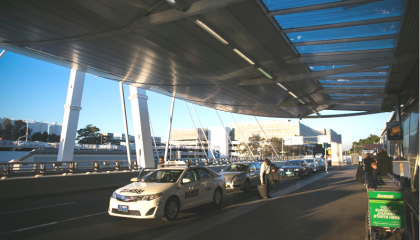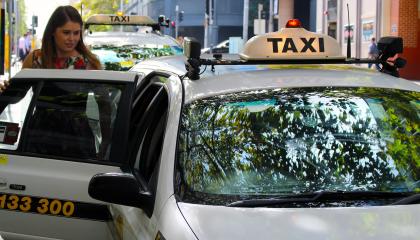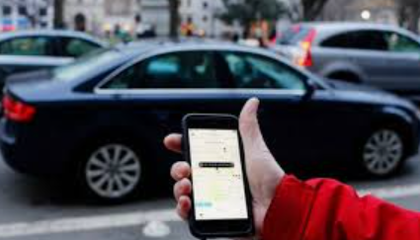Taxi and hire vehicle (including rideshare) drivers must comply with obligations under the law. There are penalties for non-compliance.
Taxi and booking service providers can also require extra standards for drivers in addition to those in the law. Drivers must comply with the policies of their
Obligations for all drivers
| Obligation | Detail |
|---|---|
| All drivers must meet certain safety standards such as holding an unrestricted driver licence for 12 months in the preceding four years and meeting medical standards. Safety standards for drivers are outlined further here. | |
| No Smoking | Taxi drivers must not smoke in their vehicle at any time. Hire vehicle, including rideshare, drivers must not smoke in their vehicle while it is being used to provide a passenger service. |
| Offensive behaviour | Drivers must not behave in an offensive manner and must not interfere with the comfort or safety of others. |
| Alcohol | Drivers’ blood alcohol concentration must be under 0.02 grams of alcohol per 100 ml of blood. |
| Equipment and vehicle | Drivers must not damage a vehicle or interfere with its equipment and drivers must not drive a vehicle that they know, or ought reasonably to know, is non-compliant with the Regulations. Read the Safety Standards for Taxis and Safety Standards for Booked Vehicles for information on what driver maintenance is permitted. |
| Seatbelts |
|
| Additional passengers | Drivers cannot permit any person to ride in the vehicle without the consent of the hirer. |
| Assistance animals | Drivers cannot prohibit any assistance animals or assistance animals in training from entering the vehicle. |
| Touting or soliciting | Drivers, or any other person, must not tout or solicit for passengers for the hiring of a vehicle. |
Airport precincts
|
|
| Complying with the directions of authorised officers | Drivers must follow the reasonable directions of the authorised officers of the Point to Point Transport Commissioner, police officers or officers authorised under transport law. Drivers must hand over their drivers licence for inspection if requested to do so by an authorised officer or the police. |
| Accepting a booking | Drivers must only accept bookings from authorised booking service providers. |
| The Passenger Service Levy | Drivers must comply with directions given by taxi or booking service providers in the course of collecting the levy. |
Obligations for hire vehicle drivers only
| Obligation | Detail |
|---|---|
| Booked Services | Drivers of hire vehicles, including rideshare, can only carry out booked |
| Vehicle markings, lights and signage | Hire and rideshare vehicles must not in any way indicate that they are a taxi through livery or paint work, markings, signs or lights that resemble those of a taxi. |
| Retroreflective signage | Drivers must display a retroreflective sign that identifies the vehicle as a hire vehicle. This sign must be displayed on or near the rear of the driver’s side of the vehicle and must be visible from outside the vehicle. |
Obligations for taxi drivers only
| Obligation | Detail | |
|---|---|---|
| Taxi zones | Drivers are only allowed to stop in an area that is not a taxi zone if they are hired or not available for hire, loading or unloading luggage or goods, or picking up and dropping off passengers. If a taxi is hired or vacant a driver cannot stop in a taxi zone. | |
| Equipment | Taxi drivers must not interfere or permit interference with a taxi’s tracking device, camera, fare calculation device or duress alarm. | |
| Accepting and terminating hires | The driver of a taxi that is available for hire must accept a hiring immediately when offered. Taxi drivers can only refuse to pick up a passenger if:
| |
| Displaying ID | Taxi drivers must display their identity document clearly. | |
| Fare Calculation Devices | For a taxi hiring using the meter, the driver must start the fare calculation device (meter) as soon as the taxi is hired and keep the meter running during the hiring. The meter must be stopped once the hiring has ended or if the taxi is delayed because of a fuel shortage or other reason in the driver’s control. See below for more information on Fares. |
Fares – for taxi drivers providing rank and hail taxi services
The Fares Order published by Transport for NSW limits the maximum fare that can be charged for a hiring that commences at a
If the taxi driver accepts a multiple hire, the taxi driver must stop the fare calculation device (meter) while the fare is being paid and the passenger is exiting the taxi.
Taxi drivers may request a hirer pay a deposit before or during a hire. The deposit must not be higher than the driver’s estimate of the authorised fare for the intended journey. A driver must give a receipt for the deposit if requested and must refund any amount greater than the final fare when the hiring is terminated.
Maxi taxis are only legally allowed to charge a higher fare (which is an amount of up 150% of the fare) if they are providing a passenger service for five or more people for a taxi caught at a rank or hail. This is a requirement of the Fares Order with which drivers must comply.
Rank and hail taxi fares – Fare Order update
Transport for NSW has published new maximum rank and hail fares that apply from 1 July 2025
What does this mean?
The new fares order will increase maximum rank and hail taxi fares by 10 cents per kilometre for each distance charge: for example, in urban areas, the daytime charge will increase from $2.19 to $2.29 per kilometre.
Any taxi service provider moving to the higher fares must continue to comply with the requirements of the point to point transport law.
Transport for NSW is responsible for the fare order, more information on the fare order, and rank and hail fares and charges can be found on Transport for NSW’s website - Rank and hail taxi fares
As a driver – what do I need to do?
Your service provider is responsible for updating the fare calculation device - you must continue to use the taxi fare calculation device (meter) for all rank and hail passenger services
- If you are a taxi driver who is providing rank and hail fairs you must not exceed the maximum fare published by your service provider.
- Taxi drivers cannot request demand a fixed fare or refuse a fare if the passenger won’t agree to a fixed fare
- Reach out to your service provider for information regarding the rank and hail fare increase
Wheelchair accessible vehicles
Drivers of wheelchair accessible vehicles must give priority to a person using a wheelchair.
Wheelchair accessible vehicles must comply with the safety standards described in the safety standards booked vehicles services and safety standards for taxis pages.
Drivers of wheelchair accessible vehicles must be able to demonstrate competency in the safe loading, restraint and unloading of a person in a wheelchair. The Regulation (Clause 26) details how service providers and drivers must comply with this safety standard.
Wheelchair accessible taxis – fares
Drivers must start the fare calculation device (meter) immediately after a taxi is hired, except for a wheelchair booking in a wheelchair accessible taxi. For a wheelchair passenger service, the fare calculation device (meter) can only be turned on once the wheelchair is safely secured. The device must be kept running during the trip and must be stopped in certain circumstances, for as long as required to prevent it from registering an unnecessary charge.
Residents of NSW who are unable to use public transport and rely on WATs because of a severe and permanent disability may qualify for the Taxi Transport Subsidy Scheme (TTSS). Transport for NSW provides detailed information for drivers regarding the TTSS scheme here.


